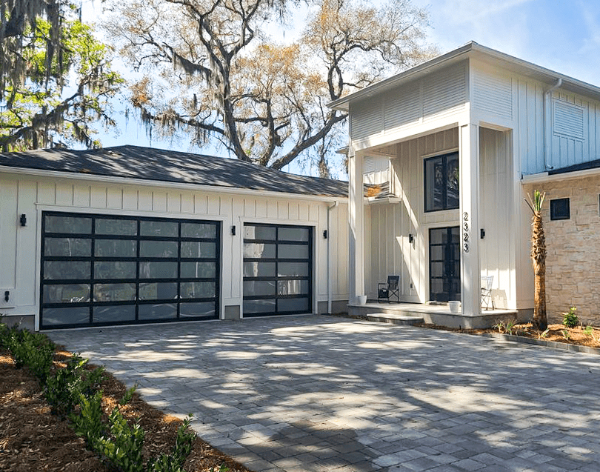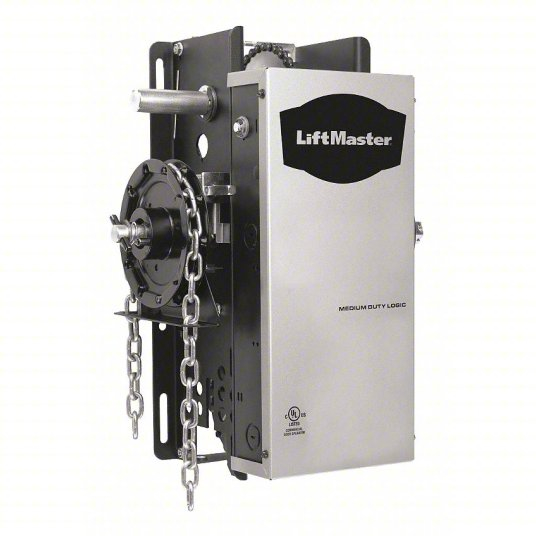Commercial Overhead Doors: History, Evolution, and Modern Systems

Commercial overhead doors are everywhere—on warehouses, fire stations, loading docks, car dealerships, and retail storefronts. They protect inventory, control access, improve energy efficiency, and keep operations moving smoothly. While they might seem like simple pieces of hardware, overhead doors have a surprisingly rich history and an impressive range of modern configurations to fit different commercial needs.
This article explores how overhead doors evolved from early carriage-style doors to today’s advanced sectional, rolling, and high-speed systems. It then breaks down the main types of commercial overhead doors, common operating systems, and key considerations when choosing the right door for your facility.
The History and Evolution of Overhead Doors
The idea of lifting a door upward instead of swinging it out is relatively modern. Early industrial buildings and carriage houses in the 19th century typically used large, side-hinged wooden doors that opened outward. These doors required significant clearance, were heavy to operate, and could be dangerous in tight urban spaces where they swung into public walkways or roadways.
In the early 1900s, inventors began experimenting with upward-lifting door designs. Instead of swinging on side hinges, these doors pivoted and moved overhead, freeing up space in front of the building. Early versions were one-piece “tilt-up” doors that rotated on side arms into a horizontal position, parking beneath the ceiling.
The real breakthrough came with the development of the sectional overhead door. Rather than one large slab, the door was divided into horizontal sections connected by hinges. These sections could travel along a set of vertical tracks and then curve onto horizontal ceiling tracks. Sectional construction made the doors easier to operate, less prone to warping, and more adaptable to different building heights and rooflines.

Part Of: Farm Security Administration - Office of War Information Collection Lot 11671-28 (DLC) 93845501
By the mid-20th century, sectional overhead doors had become standard in commercial and industrial settings. At the same time, rolling steel doors emerged as a durable solution for high-security and high-cycle applications. These doors consisted of interlocking slats that coiled into a compact barrel above the opening, saving interior space and providing excellent impact resistance.
As building codes, energy costs, and security needs evolved, so did overhead doors. Insulated door panels, weather seals, and wind-rated designs became more common. Motor operators/openers, safety sensors, and remote controls improved convenience and safety. In recent decades, high-speed fabric and rubber doors have entered the market, giving facilities options for ultra-fast, high-cycle performance where climate control and traffic flow are critical.
Major Types of Commercial Overhead Doors
Commercial overhead doors can be grouped into several major categories, each designed to address specific performance, space, or security requirements.

1. Sectional Steel Overhead Doors
Sectional steel doors are among the most common choices for warehouses, distribution centers, auto shops, and commercial garages. They’re constructed from multiple horizontal panels (sections) hinged together, running in vertical tracks that curve to horizontal tracks overhead.
- Construction: Typically made from 24- to 27-gauge steel, with single-layer (non-insulated), double-layer, or triple-layer (sandwich) construction that encapsulates insulation between steel skins.
- Insulation: Polyurethane or polystyrene cores improve thermal performance, reduce noise, and increase door rigidity.
- Benefits: Good security, strong durability, wide range of window, panel, and color options, and compatibility with both manual and motorized operation.
- Typical applications: Loading docks, maintenance bays, fleet garages, light industrial buildings, and commercial retail back-of-house access.
Sectional doors are flexible in terms of headroom requirements. Different track configurations: standard lift, high lift, full vertical lift, and low headroom all allow the system to work with a variety of interior layouts and ceiling heights.

2. Aluminum Full-View Overhead Doors
Aluminum full-view doors use extruded aluminum frames with large glass or acrylic vision panels. They operate on the same sectional principle as steel doors but are designed for visibility and aesthetics.
- Appearance: Clean, contemporary look that showcases interiors and lets in natural light.
- Customization: Various glass types (clear, tinted, insulated, frosted), frame finishes, and grid layouts.
- Benefits: Strong curb appeal, enhanced visibility for showrooms, and improved daylighting that reduces the need for artificial lighting.
- Typical applications: Auto dealerships, fire stations, restaurants with indoor/outdoor dining, retail facades, and service centers.
Although aluminum full-view doors can be insulated with dual-pane glass, they’re generally selected more for appearance and visibility than for maximum thermal performance.

3. Rolling Steel and Rolling Service Doors
Rolling steel doors (also called coiling or roll-up doors) are built from horizontal slats of steel that interlock and coil around a barrel at the top of the opening. Unlike sectional doors, they don’t store along the ceiling, making them ideal where interior space is limited or occupied by cranes, ducts, or storage.
- Construction: Slats in galvanized steel, stainless steel, or aluminum; optional insulation; heavy-duty guides and end locks for stability.
- Security: Excellent resistance to forced entry, impact, and vandalism; commonly paired with grilles or fire-rated options.
- Durability: Designed for high-cycle operation with robust springs and barrel assemblies.
- Typical applications: Warehouses, high-security facilities, parking garages, loading docks in tight spaces, and retail security closures.
Rolling service doors can also be configured as fire-rated doors that automatically close when connected to fire alarm systems, creating compartmentalization and helping to slow fire spread in commercial structures.
4. Fire-Rated Overhead Doors
Fire-rated overhead doors are specially engineered to help compartmentalize a building and slow the spread of smoke and flames. They are commonly based on rolling steel or, less often, sectional designs.
- Ratings: Typically available in 45-minute, 90-minute, and 3-hour fire-resistance ratings, depending on code requirements.
- Operation: Integrated with fusible links, smoke detectors, or alarm systems so they can close automatically in the event of a fire.
- Applications: Warehouses, manufacturing plants, parking garages, and any location where fire barriers are required along corridors, loading areas, or between building occupancies.
5. Security Grilles and Counter Shutters
While not always thought of as “doors” in the traditional sense, rolling security grilles and counter shutters are part of the commercial overhead family.
- Security grilles: Open-mesh rolling barriers for storefronts, mall tenants, parking garages, or bank lobbies where visibility and airflow must be maintained after hours.
- Counter shutters: Smaller rolling doors protecting concession stands, ticket windows, pharmacy counters, and service desks.
Overhead Door Operating Systems and Hardware
Beyond the door curtain or sections themselves, the operating system plays a major role in performance, safety, and ease of use.
Manual Operation
Smaller or less frequently used commercial doors are sometimes operated manually. Common manual options include:
- Pull-up or push-up operation: For lightweight doors on small openings.
- Chain hoist (chain hoist opener): A geared hand chain allows users to open and close larger, heavier doors with controlled effort.
Manual systems are simple and cost-effective but may be impractical in high-traffic areas or on very large, insulated doors where weight and frequency of use demand power operation.
Powered Operators
Most commercial overhead doors use electric operators, sometimes called openers. These motor units are matched to the door’s size, weight, and duty cycle.
- Jackshaft operators: Mounted to the side of the door shaft, commonly used on sectional and rolling doors with torsion spring assemblies.
- Trolley operators: Installed on the ceiling above the door opening, more common in light-commercial or residential-style sectional doors.
- Direct-drive high-speed operators: Specialized high-torque, high-cycle motors designed for rapid acceleration and braking on high-speed fabric or rubber doors.
Operators or openers can be controlled by wall-mounted push-button stations, key switches, pull cords, remote transmitters, keypads, or integrated access control systems.

Safety and Control Accessories
Modern commercial overhead doors incorporate multiple safety and control features:
- Photoelectric sensors: Light beams at the bottom of the opening that reverse the door if an object or person is detected.
- Sensing edges: Pressure-sensitive edges on the bottom of the door that signal the operator to stop or reverse on contact.
- Traffic lights and warning buzzers: Visual and audible alerts at high-traffic docks or doorways.
- Interlocks and access control: Integration with card readers, gates, or building security systems to manage who can open each door and when.
Key Considerations When Selecting a Commercial Overhead Door
Choosing the right overhead door system starts with a clear understanding of your facility’s needs and constraints. Important factors include:
- Usage and cycle count: How often will the door be opened and closed daily? High-cycle applications may justify heavy-duty hardware or high-speed doors.
- Security requirements: Evaluate the potential threats to your building and whether you need heavy-gauge steel, tamper-resistant hardware, or integrated access control.
- Environmental control: For climate-controlled spaces, cold storage, or clean environments, prioritize insulation values, sealing systems, and opening speed.
- Space constraints: Consider interior obstructions, ceiling height, and available side room when deciding between sectional, rolling, or high-speed systems.
- Code compliance: Local building codes, wind-load requirements, and fire-rating needs all influence door selection and hardware.
- Maintenance and lifecycle cost: Initial price is just one piece of the puzzle as you must also account for serviceability, part availability, and anticipated maintenance over the door’s life.
Working with an experienced commercial overhead door provider such as C & M Garage Doors can help you navigate these variables and match door types, operators, and safety accessories to your operational goals.
From their early days replacing cumbersome swing-out carriage doors to today’s specialized, high-performance systems, commercial overhead doors have evolved into an essential part of modern building design. With the right combination of door type, opener, and safety features, they protect your assets, support efficient workflows, and contribute to the overall performance of your facility.
